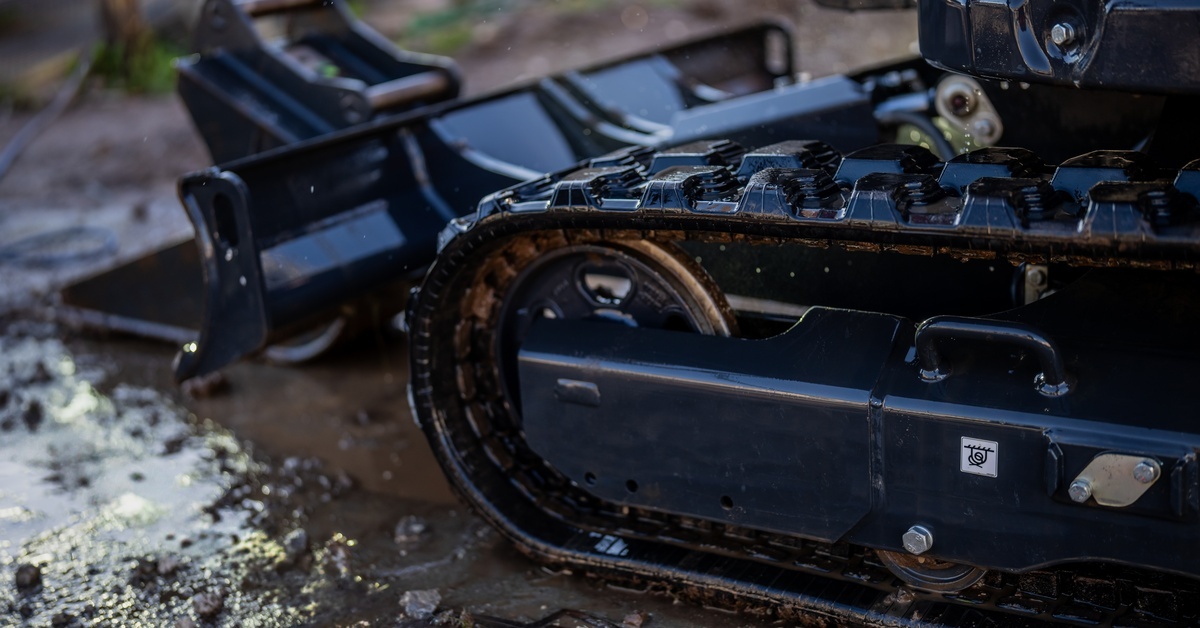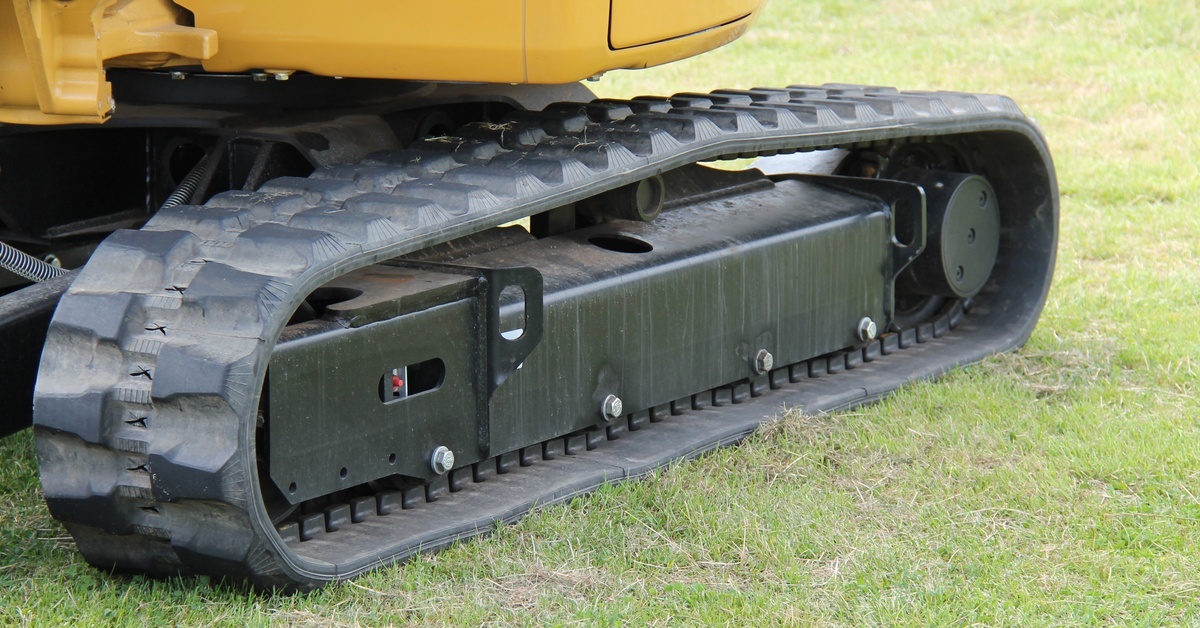Understanding Rubber Track Tread Designs and Their Uses
Oct 3rd 2025
Choosing the right rubber tracks for your heavy machinery has a direct impact on the success of your project. The tread design dictates how your equipment grips terrain, distributes weight, and withstands daily wear.
A mismatched tread can lead to lost traction, damaged surfaces, and costly downtime, while the correct pattern ensures peak performance and efficiency. Understanding rubber track tread designs and their uses will help you make the best choice for your work zones and projects, improving your overall operations.
The tread on a rubber track connects your machine to the ground, and its design tackles specific challenges. The pattern of lugs, bars, and grooves determines traction, flotation, and durability.
A well-chosen tread enhances your machine’s power, allowing you to work with confidence. It provides superior grip on challenging surfaces, reduces ground pressure to protect sensitive areas like turf or fresh pavement, and even improves operator comfort by minimizing vibration.
Investing in the right tread design from the start pays dividends. You can avoid the frustration of a skid steer sliding in mud or a mini-excavator tearing up a client’s lawn.
By matching the tread to your primary work environment, you extend the life of your tracks, reduce wear on your machine’s undercarriage, and complete jobs more efficiently. The difference in performance between a generic track and one specifically designed for your application can be substantial.
Manufacturers produce a variety of tread patterns, each with a distinct purpose. While designs may vary slightly between brands, they generally fall into a few key categories. Understanding rubber track tread design patterns and their uses is the first step toward optimizing your equipment’s performance.
The most common designs you will encounter are straight-bar, block, multi-bar, and zig-zag patterns. Straight-bar treads feature prominent, parallel bars that run across the entire width of the track. Block patterns consist of chunky, independent blocks that provide a versatile, all-around grip.
Multi-bar designs use a series of smaller, tightly spaced bars for smooth operation on hard surfaces. Finally, zig-zag or chevron patterns offer an aggressive, angular design for maximum grip on uneven or sloped ground. Each of these designs exists to solve a specific operational problem.

A tread design proves effective when used in the right environment. A pattern that excels in one environment may perform poorly in another.
For example, a straight-bar tread is the undisputed champion in wet, muddy conditions. Its deep, wide channels excel at paddling through mud and ejecting debris, preventing the tracks from caking and losing grip. This width makes it a top choice for forestry and excavation in damp soil.
In contrast, block treads offer the greatest versatility. Their design provides a balanced combination of traction and durability, making them a popular OEM choice for compact track loaders and mini-excavators across construction and landscaping applications.
For work on sensitive surfaces, such as asphalt, concrete, or manicured turf, the multi-bar tread is the superior option. Its low-profile pattern minimizes ground disturbance and vibration, resulting in a smoother ride and reduced damage. Finally, the aggressive grip of a zig-zag or chevron pattern makes it ideal for mining, quarrying, and working on steep hillsides where maximum traction is non-negotiable.
Even the highest quality rubber tracks eventually reach the end of their service life. Recognizing the signs of track wear and knowing when to replace them is essential for uninterrupted operation and safety. Visual cues include missing or severely worn lugs, deep cracks that expose internal metal, or a track that frequently slips.
Regularly inspect both the tread surface and the sides for splitting or delamination. If you notice that your equipment vibrates more or grips less securely, it’s likely time for new tracks. Operating on excessively worn tracks could damage the undercarriage and cause unplanned downtime.
Many equipment owners turn to knowledgeable suppliers for advice on track assessment and optimal replacement intervals. Tractor Zone’s inventory features tracks engineered for durability, backed by customer service teams who can help you make the switch at the right time.
Selecting the optimal tread pattern requires evaluating several key factors. Your primary work environment is the most important consideration. Ask yourself: will the machine operate mostly on soft soil, hard pavement, mixed terrain, or steep slopes?
A clear answer will immediately narrow your options. For instance, if you primarily work on finished landscapes, a multi-bar or block tread is far more suitable than an aggressive straight-bar design.
Consider your typical applications. Are you primarily digging, grading, hauling, or pushing? A tread designed for aggressive traction will benefit earthmoving tasks, while a smoother pattern is better for material handling on finished surfaces.
You must also ensure the tracks are compatible with your machine’s weight, horsepower, and undercarriage system. Make sure you weigh the cost against performance needs. While a specialized tread may have a higher initial cost, the gains in efficiency and longevity often provide a greater return on investment.

Proper maintenance is essential for maximizing the lifespan of your rubber tracks, regardless of the tread design. You can protect your investment and prevent premature failure by implementing a few simple habits.
Firstly, conduct daily visual inspections. Look for deep cuts, cracks, missing lugs, or embedded objects, such as rocks and rebar, that can cause significant damage over time.
Regularly clean your tracks and undercarriage, especially after working in mud, clay, or abrasive materials. Caked-on debris can accelerate wear and cause the tracks to de-track.
You should also check and adjust track tension according to the manufacturer’s specifications. A track that is too tight creates excessive stress on the undercarriage components, while a loose track can slip or get damaged.
Finally, when storing tracks, keep them in a cool, dry place away from direct sunlight and ozone sources to prevent the rubber from degrading. Ultimately, sourcing high-quality tracks from a trusted supplier like Tractor Zone ensures you start with a durable product built to withstand tough conditions.
If you want to get the most value from your rubber track investment, focus on pairing the right tread design with proper operator training and consistent maintenance routines. Operators should understand how different terrains and activities affect track wear and adjust their driving habits, such as making wide turns and avoiding abrupt pivots, to minimize excess strain.
Retrofitting your machines with new or improved treads also boosts productivity, limits site damage, and supports safer work practices. Tractor Zone’s commitment to quality and expert support ensures you get the best value for your investment.
Taking the time to assess your terrain, application, and equipment needs ensures you select a tread that works as hard as you do. This informed decision will save you time and money, reduce wear on your equipment, and deliver superior results on every job. When you are ready to upgrade your equipment with the best industrial rubber tracks for your needs, explore the extensive inventory and expert advice available at Tractor Zone.